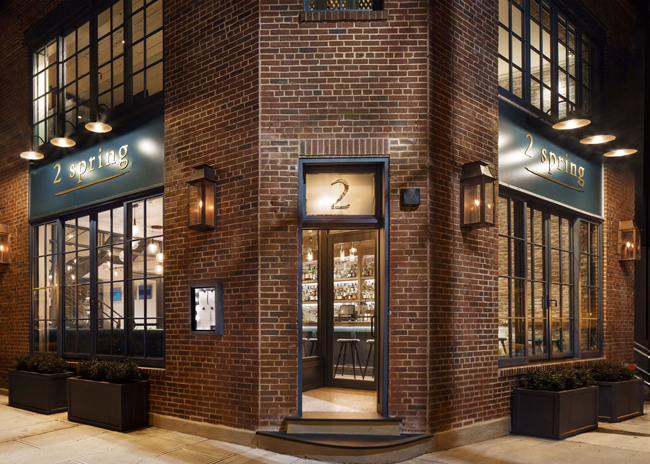 Howland BlackistonYour menu board is often the first thing customers look for as they enter your restaurant and it’s a very important tool, both for selling and connecting with guests.
Howland BlackistonYour menu board is often the first thing customers look for as they enter your restaurant and it’s a very important tool, both for selling and connecting with guests.
The primary goal of menu boards, of course, is to help customers discover what they want to eat, but you can also use them as communication and promotional tools.
Howland Blackiston, owner and principal of King Casey, a menu reengineering company in Westport, Conn., works on menu and menu board optimization with QSR and fast-casual brands. He offers six best practices in menu board design.
1. Do a deep dive on the menu.
Restaurant operators need to understand the dishes on their menus before they can design their menu boards. How does each category, and each dish within a category, contribute to the business? What are best sellers? What are high-profit items?
“You really need to dig into the costs — labor and ingredients — and know every item on your menu,” Blackiston says. “This is not an easy exercise and really involves rolling up your sleeves and working out everything.”
To understand your menu and how to optimize it, do your homework. For each dish, figure out the profit margin, how it performs, how much waste it generates, and how much labor it requires.
2. Design the menu.
Every establishment has a hot spot, and the primary ordering point determines that location, says Blackiston. So, if customers order from the middle of a counter area, the hot spot is directly above it. From there, he says, consumers’ eyes move left.
Of course, it’s different at the drive-thru “because of where people position themselves in the car,” Blackiston says. “They look first to the right and straight ahead.”
By putting items in the hot spot, restaurants can speed their throughput, Blackiston points out. “If people have to look for their favorites, it can take longer, even if it’s just seconds.” Within categories, it’s also best to list the best-selling items first, he adds.
3. Make items pop.
Use your hot spots and visuals to sell items you want to move. Consumers prefer to order from pictures, says Blackiston, but don’t add too many or your menu will look cluttered.
“Use pictures strategically to influence the most desirable sales because we eat with our eyes and restaurants can build visual appeal,” says Blackiston. “And, not everybody speaks English.”
Video represents an effective tool but use it strategically, Blackiston says. If videos are too eye-catching, they’ll slow down the queue. Simple, quick videos work best, he points out, to communicate the freshness of the food, or that it’s cooked-to-order.
4. Pre-sell items.
If there are items you’re pushing, such as LTOs, or something new to your brand, promote them before customers get to the menu board as well as on it.
Have signage at the door that features photos of the menu items and teaser descriptions. “When they get to the menu board you close the sale,” Blackiston says. “You’re almost warming the customer up before they get to the menu board.”
Strategically place these pre-sell signs along the drive-thru to capture customers’ eyes — and stomachs — before they reach the menu boards and ordering point.
5. Don’t change it up too frequently.
Change your menu board due to pricing or strategic choices (like dayparts), as well as seasonally, says Blackiston, but don’t shake it up too often. “People get very comfortable with menu boards and when they’re changed it can take a number of weeks before regular customers settle into the new layouts,” which of course, slows down the line.
6. Brand carefully.
Use your menu board to continue your branding — with color, with language, with proprietary names, and so forth, but don’t go too far.
“I’m not a big fan of restaurants who put their logo all over it because real estate is at such a premium,” Blackiston says. “The menu board should be all about selling and nothing else.” There’s no need to add your restaurant name to the menu board, he says. “Consumers know what restaurant they’re at.”



